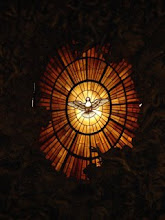Salta is another nice city, but the highlights are in the surrounding areas. First we went to the north, through the mountains to the Salinas Grandes, in search of some dry salt flats. Then back to the city through the pretty town of Purmamarca, which involves a very steep descent into the valley from above the clouds.

 Llamas next to the highway
Llamas next to the highway Salinas Grandes - When rectangles of salt are extracted you can see the pools of water underneath
Salinas Grandes - When rectangles of salt are extracted you can see the pools of water underneath Salinas Grandes
Salinas Grandes The road to Purmamarca
The road to PurmamarcaThe next day we went south through the Quebrada de Cafayate to the city of Cafayate. The highlight of this trip is really the journey. There are so many beautiful mountains of all different colors and compositions, and a ton of interesting rock formations.





After Salta it was off to Cordoba, where I voluteered back in 2009. At this point my travel companion and I decided to split up, to take some time off and to each be able to follow the routes we want to. I spent my first day doing a version of "This Was Your Life," in which I visited all of the places I went to in my time here. The second day was Easter Friday, so almost everything was closed. I ended up going to the giant annual artesan fair, which is huge and has artists from all of South America.
Tonight I´m back on a bus, and I should arrive in Mendoza in the morning!



















































